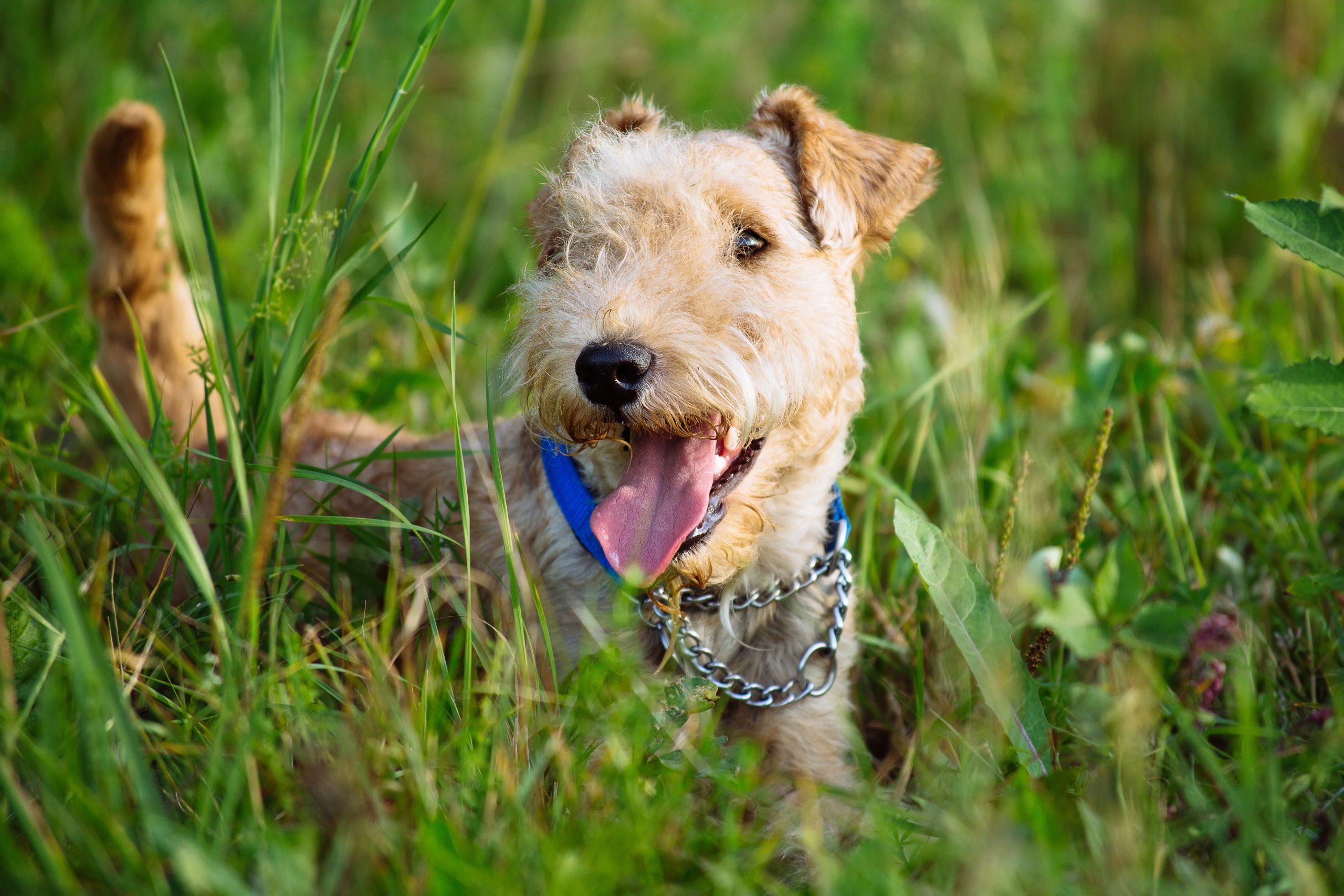Lakeland Terrier
No products found which match your selection.
Shelter Dog Meal Donation Count:
No products found which match your selection.
Originating from England’s Lake District, the Lakeland Terrier is a small, energetic breed with a wiry coat. Known for intelligence and confidence, it excels in agility and requires regular grooming and exercise, making it a spirited family companion.
Initially bred for hunting foxes in the rugged terrain of the Lake District, Lakeland Terriers are tenacious and courageous. They have a keen hunting instinct but are equally happy being family companions.

The Lakeland Terrier’s origins trace back to the early 20th century in Northern England. They were bred from a mix of other terrier breeds, including the Bedlington Terrier and the Border Terrier, to be efficient fox hunters.




Generally a healthy breed, but can be prone to hip dysplasia, eye problems, and some skin conditions. Regular health check-ups are recommended.
Their wiry coat requires regular brushing and occasional professional grooming to maintain its condition and to strip the dead hair.
Daily exercises like walks and playtime are necessary. They enjoy interactive games and challenges.
Intelligent but sometimes independent, they respond well to consistent, positive reinforcement-based training. Early socialization is key to developing well-rounded behavior.
A balanced diet suited to their size, age, and activity level is crucial. Portion control is important to avoid weight gain.
The Lakeland Terrier is a delightful, spirited breed, ideal for those who appreciate a bold, active, and independent dog. They are adaptable to various living situations, including apartments, if their exercise needs are met. With proper care, training, and attention, Lakeland Terriers make affectionate and amusing companions.
Lakeland Terriers are generally a robust and healthy breed, but they can be susceptible to certain health conditions. Being aware of these issues and conducting recommended tests can aid in early detection and effective management.
By being proactive about health care and ensuring regular veterinary check-ups, Lakeland Terrier owners can help their pets lead a long and healthy life. Awareness of these common health issues and the recommended tests are crucial for this purpose.
The iHeartDogs Free Rx Discount Card Program is a pet prescription discount card that can help you save money on your furry friend’s medications. The card is free to sign up for, and you can use it at participating pharmacies nationwide. To use the free program, simply show the card to your pharmacist when you pick up your pet’s prescription. The pharmacist will then scan the card, and you will receive a discount on the price of the medication.LEARN MORE
Caring for a Lakeland Terrier involves various expenses that are essential for their health, well-being, and happiness. The annual cost can vary based on factors such as your geographical location, the dog’s specific needs, and the level of care provided. Here’s a breakdown of the typical expenses:
Total Estimated Annual Cost:
$2635 - $6370
It's important to note that these figures are estimates and can vary. Also, the first year of owning a dog can be more expensive due to one-time costs like spaying/neutering, initial vaccinations, and training. Regular budgeting for your dog's needs and an emergency fund for unforeseen costs are essential for responsible pet ownership.